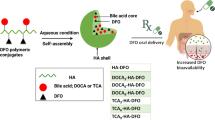Abstract
The aim of these experiments was to investigate the radical scavenging properties of three diuretics: indapamide (IND) and its major metabolite, 5-OH indapamide (5-OH IND), compared to a reference diuretic, hydrochlorothiazide (HTZ). Electron Paramagnetic Resonance (EPR) was used to determine the scavenging abilities of these compounds on enzymatically produced superoxide radical anion, with 5,5-dimethyl-1-pyrroline N-oxide (DMPO) used as a spin-trap. These experiments revealed that IND and specially 5-OH IND were effective superoxide radical anion scavengers at 0.2 mg/ml. In the second part of these studies, allophycocyanin was used as an indicator of free radical mediated protein damage. In the assay, 2,2′-azobis(2-amidinopropane) hydrochloride (AAPH) was used as a peroxyl radical generator, Trolox (a water-soluble analogue of vitamin E) as a control standard, and the loss of allophycocyanin fluorescence was monitored. The antioxidant effects of the diuretics were expressed in oxygen-radical absorbing capacity (ORAC), where one ORAC unit equals the net protection produced by 1 µM Trolox. HTZ showed no protection up to 100 µM final concentration, whereas IND and 5-OH IND showed linear correlation with respect to concentration when expressed in ORAC units: 5-OH IND induced the highest protection against peroxyl radical. The above observations suggested that IND and 5-OH IND are potent radical scavengers, with the metabolite 5-OH IND having a superior antioxidant potency than IND. By contrast, HTZ had no effect. These radical scavenging properties of 5-OH IND may be of clinical interest for vascular protection and may help to protect the heart from oxidative injury.
Similar content being viewed by others
References
Slater TF: Free-radical mechanisms in tissue injury. Biochem J 222: 1–15, 1984
Burton GW, Ingold KU: Autoxidation of biological molecules. I. The antioxidant activity of vitamin E and related chain-breaking phenolic antioxidants in vitro. J Am Chem Soc 103: 6472–6476, 1981
Drevon CA: Absorption, transport and metabolism of vitamin E. Free Rad Res Comm 14: 229–246, 1991
Abadie C, Baouali AB, Maupoil V, Rochette L: An a-tocopherol analogue with antioxidant activity improves myocardial function during ischemia reperfusion in isolated working rat hearts. Free Radic Biol Med: 209–215, 1993
Campbell DB, Brackman F: Cardiovascular protective properties of indapamide. Am J Cardiol 6: 11H–27H, 1990
Del Rio M, Gonzalez P, Tejerina T: Effects of indapamide on contractile responses and 45Ca2+ movements in various isolated blood vessels. Eur J Pharm 250: 133–139, 1993
Tamura A, Sato T, Fujii T: Antioxidant activity of indapamide and its metabolise. Chem Pharm Bull 38(1): 255–257, 1990
Uehara Y, Kawabata Y, Shirahase H, Wada K, Hashizume Y, Morishita S, Numabe A, Iwai J, Matsuoka H, Sugimoto T: Radical scavenging properties of indapamide and renal protection in Dahl salt-sensitive rats. Hypertens Res 15: 17–26, 1992
Cao G, Alessio H, Cutler RG: Oxygen-radical absorbance capacity assay for antioxidants. Free Radic Biol Med 14: 303–311, 1993
Wayner DDM, Burton GW, Ingold KU, Barclay LRC, Locke SJ: The relative contribution of vitamin E, urate, ascorbate and proteins to the total peroxyl radical-trapping antioxidant capacity of human blood plasma. Anal Biochem 177: 408–419, 1987
Breugnot C, Iliou JP, Privat S, Robin F, Vilaine JP, Lenaers A: In vitro and ex vivo inhibition of the modification of low-density lipoprotein by indapamide. J Cardiovasc Pharmacol 20: 340–347, 1992
Calder J, Schachter M, Sever PS: Vasorelaxant actions of 5-OHindapamide, a major metabolise of indapamide: Comparison with indapamide, hydrochlorothiazide and cicletanine. Eur J Pharma 256: 185–191, 1994
Burton KP, Morris AC, Massey KD, Buja M, Hagler HK: Free radicals alter ionic calcium levels and membrane phospholipids in cultured rat ventricular myocytes. J Mol Cell Cardiol 22: 1035–1047, 1990
Josephson RA, Silverman HS, Lakatta EG, Stern MD, Zweier JL: Study of the mechanisms of hydrogen peroxide and hydroxyl free radicalinduced cellular injury and calcium overload in cardiac myocytes. J Biol Chem 266: 2354–2361, 1991
Mekhfi H, Velsler V, Mateo P, Maupoil V, Rochette L, Ventura-Clapier R: Creatine kinase is the main target of reactive oxygen species in cardiac myofibrils. Circ Res 78: 1016–1027, 1996
Salvemini D, De Nucci G, Sneddon JM, Vane JR: Superoxide anions enhance platelet adhesion and aggregation. Br J Pharmacol 97: 1145–1150, 1989
Shirahase H, Suzuki Y, Kunitomo K, Osumi S, Kaketani N. Platelet aggregation inhibition of indapamide (Natrix) in vitro-2. J Med Pharm Sci 18: 1021–1024, 1987
Vanhoutte PM, Luscher TF: Role of the endothelium in the pathophysiology of hypertension. JAMA 4 Suppl 4: 34–42, 1988
Boucher FR, Schatz CJ, Guez DM, de Leiris JG: Beneficial effect of indapamide in experimental myocardial ischemia. Am J Hypertens 5: 22–25, 1992
Kumar KV, Das UN: Are free radicals involved in the pathophysiology of human essential hypertension? Free Rad Res Comms 19: 59–66, 1993
Author information
Authors and Affiliations
Rights and permissions
About this article
Cite this article
Vergely, C., Walker, M.K., Zeller, M. et al. Antioxidant properties of indapamide, 5-OH indapamide and hydrochlorothiazide evaluated by oxygen-radical absorbing capacity and electron paramagnetic resonance. Mol Cell Biochem 178, 151–155 (1998). https://doi.org/10.1023/A:1006845612499
Issue Date:
DOI: https://doi.org/10.1023/A:1006845612499




